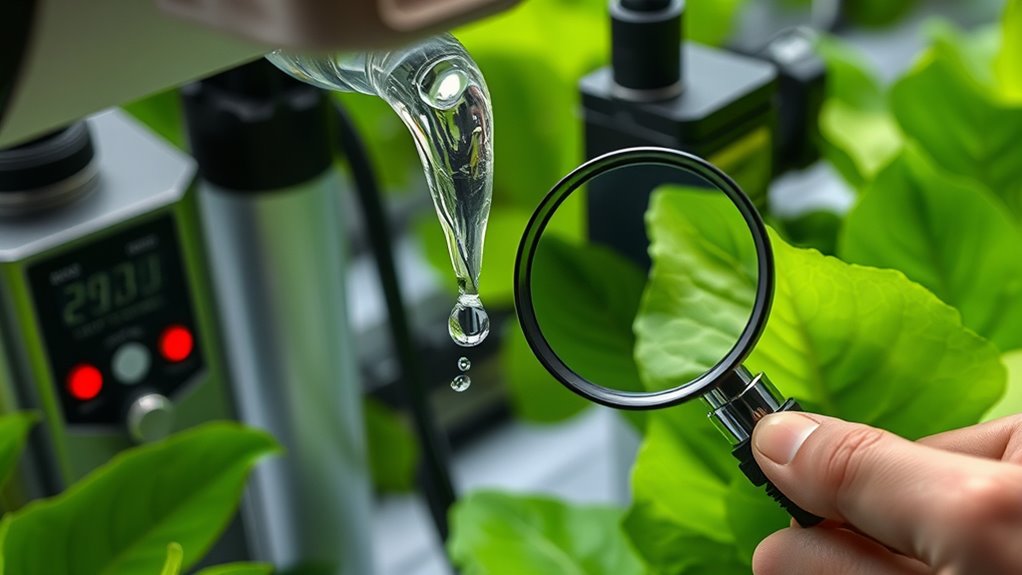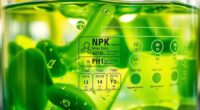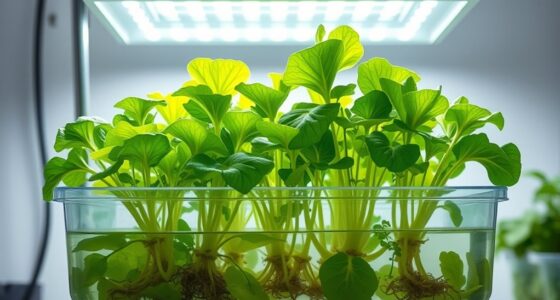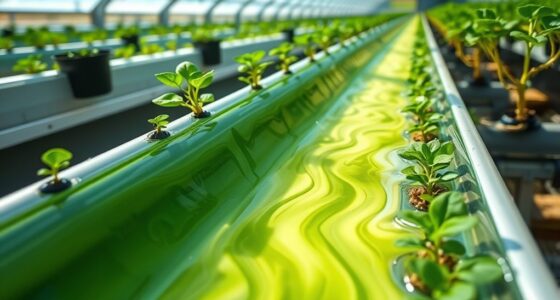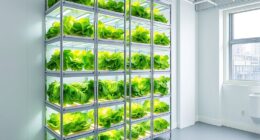To troubleshoot hydroponic system leaks, inspect all connections, hoses, and seals for tightness and cracks, fixing or replacing faulty parts. Clear clogs by using filters, flushing lines, and checking for debris regularly. For failing pumps, clean and maintain components, ensure electrical connections are secure, and test the power supply. Addressing these issues promptly helps keep your system running smoothly; discover more tips to sustain a healthy setup as you continue.
Key Takeaways
- Inspect and tighten fittings, hoses, and seals regularly to prevent and fix leaks promptly.
- Use filters and flush lines periodically to prevent clogs and ensure consistent water flow.
- Perform routine pump maintenance, cleaning, and electrical checks to ensure reliable operation.
- Troubleshoot pump issues by checking wiring, listening for unusual sounds, and replacing faulty parts.
- Monitor system components regularly, fixing leaks and clogs early to maintain optimal hydroponic performance.
Identifying and Fixing Leaks in Your Hydroponic Setup
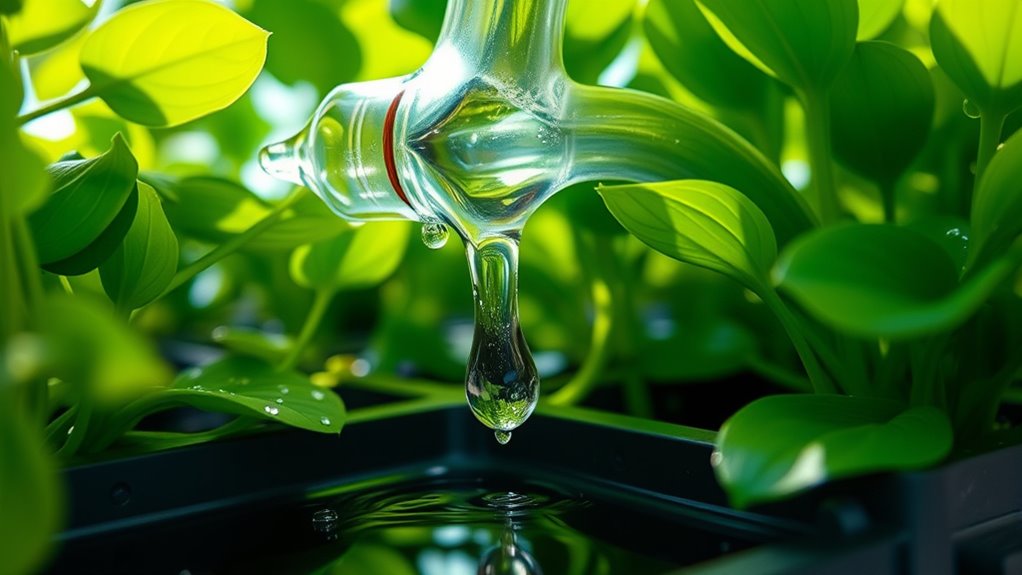
Leaks can quietly undermine your hydroponic system’s efficiency, so it’s essential to identify and fix them promptly. Start by inspecting your reservoir sealing, ensuring all fittings and seals are tight and intact. Small drips or wet spots around connections often signal leaks that could compromise nutrient solution stability. Check hoses, joints, and valves regularly for cracks or looseness, tightening or replacing parts as needed. Maintaining a secure reservoir seal prevents nutrient solution from escaping and helps keep your system running smoothly. If you notice a drop in water levels without explanation, investigate for leaks immediately. Fixing leaks early preserves nutrient solution stability and prevents potential damage to your plants. Regular inspection of system components can help catch issues before they escalate. Consistent monitoring and maintenance keep your hydroponic setup reliable and efficient.
Clearing and Preventing Clogs for Optimal Water Flow
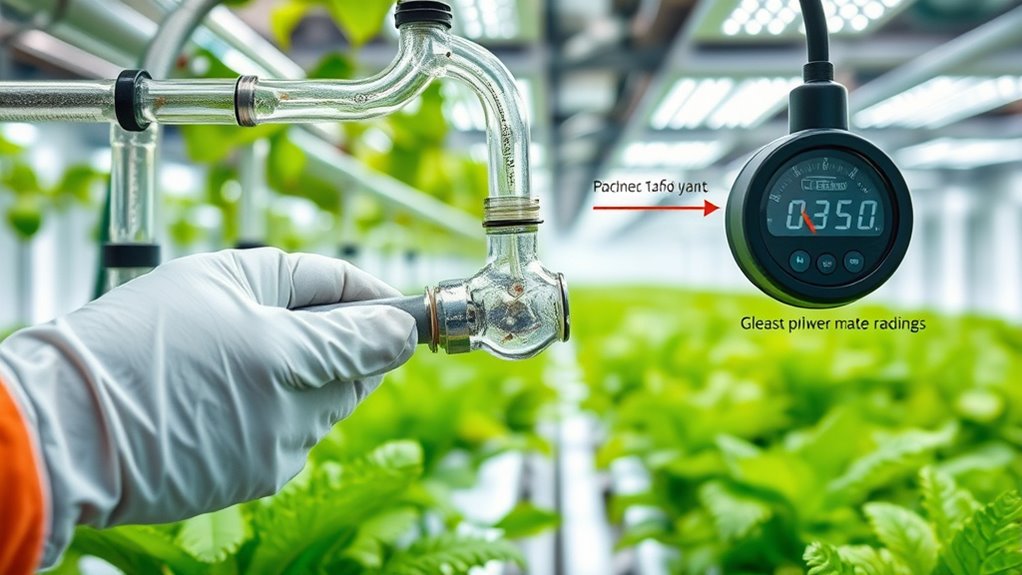
Regularly checking your hydroponic system for clogs guarantees water flows smoothly and plants stay healthy. To prevent issues, perform root cause analysis to identify underlying problems causing blockages. Use clog prevention techniques like filtering water before it reaches emitters, flushing lines periodically, and inspecting tubing for debris. Keeping your system clean minimizes buildup and reduces clog risk. Staying proactive with these steps ensures ideal water flow and healthy plants. Additionally, understanding automation in business can help streamline maintenance tasks, making system management more efficient.
Troubleshooting and Maintaining Pumps for Reliable Operation
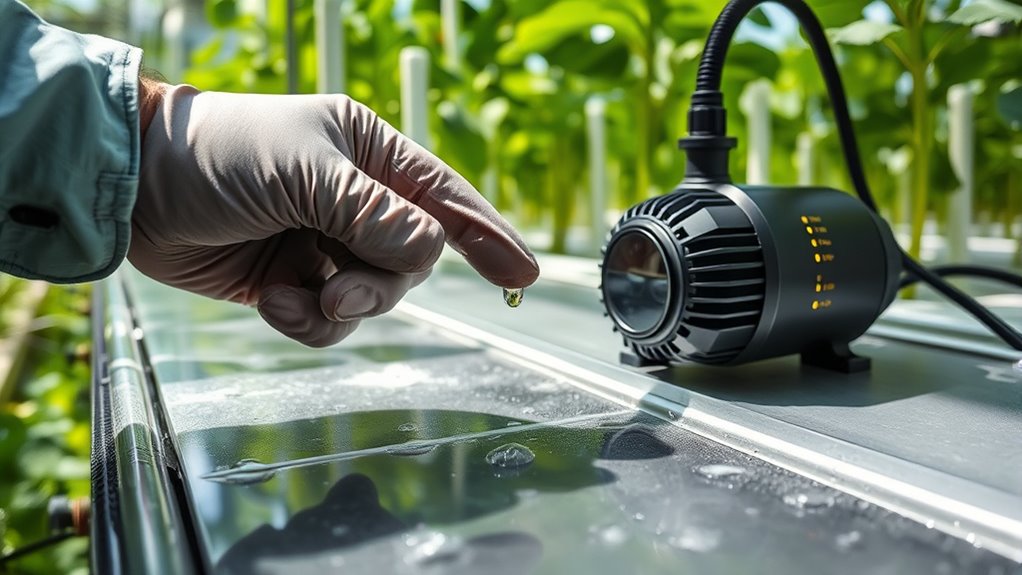
A well-maintained pump is essential for consistent water circulation in your hydroponic system, and troubleshooting issues early can prevent costly downtime. Regular pump maintenance keeps parts clean and functioning smoothly, reducing the risk of failure. Check for debris or mineral buildup that could hinder operation and clean or replace parts as needed. When your pump isn’t working properly, start with electrical troubleshooting—inspect cords, connections, and switches for damage or loose wiring. Listen for unusual noises or vibrations that indicate mechanical issues. If the pump still fails to operate, test the power source and consider replacing faulty components. Staying proactive with pump maintenance and electrical troubleshooting helps ensure your system runs reliably, maximizing healthy plant growth and minimizing interruptions. Additionally, understanding the effects of mineral buildup can help you take preventive measures to extend the lifespan of your pump.
Frequently Asked Questions
How Often Should I Inspect My Hydroponic System for Leaks?
You should inspect your hydroponic system for leaks at least once a week as part of your regular maintenance schedule. Consistent system monitoring helps catch issues early before they cause significant damage. Keep an eye on all connections, tubing, and reservoirs to guarantee everything stays sealed and secure. Regular inspections help maintain peak system performance, prevent water waste, and promote healthy plant growth.
What Are the Best Tools for Detecting Hidden Leaks?
Your quest to find hidden leaks can feel like searching for a needle in a haystack. Use dye testing to spot even the tiniest leaks by adding a vibrant dye into your system and watching for color escape. Pressure gauges are invaluable, helping you detect drops that indicate leaks. Combining these tools makes leak detection more effective, saving you hours of frustration and ensuring your hydroponic system runs smoothly.
Can Overfeeding Cause Clogs in Hydroponic Systems?
Overfeeding can definitely cause clogs in your hydroponic system. When you give too many nutrients, it leads to nutrient overdose, which can promote root congestion. This congestion blocks the flow of water and nutrients, causing buildup and potential clogs. To prevent this, always follow recommended feeding schedules and monitor your plants closely. Proper nutrient management guarantees smooth system operation and healthy plant growth.
How Do I Identify a Failing Pump Early?
Did you know that nearly 60% of pump failures happen due to neglect in maintenance? To spot a failing pump early, pay attention to unusual noises, vibrations, or drops in water flow. Regular system diagnostics can help you catch problems before they worsen. Keep up with pump maintenance by inspecting connections and cleaning filters to guarantee your system runs smoothly and avoids costly repairs.
Are There Eco-Friendly Solutions to Prevent Pump Failures?
To prevent pump failures eco-friendly, consider using biodegradable lubricants to reduce environmental impact and guarantee smooth operation. You might also switch to solar-powered pumps, which rely on renewable energy and have fewer mechanical parts prone to failure. Regular maintenance and monitoring can catch issues early, but these eco-friendly solutions help sustain your system’s health while protecting the environment. Combining these strategies keeps your hydroponic setup reliable and green.
Conclusion
Regularly inspecting your hydroponic system can boost your plant yield by up to 20%. By quickly fixing leaks, clearing clogs, and maintaining pumps, you prevent costly breakdowns and ensure consistent growth. Remember, a small leak or clog can disrupt your entire setup, so stay proactive. Keeping your system in top shape not only saves you time and money but also helps your plants thrive. Stay vigilant, and your hydroponic garden will flourish!
